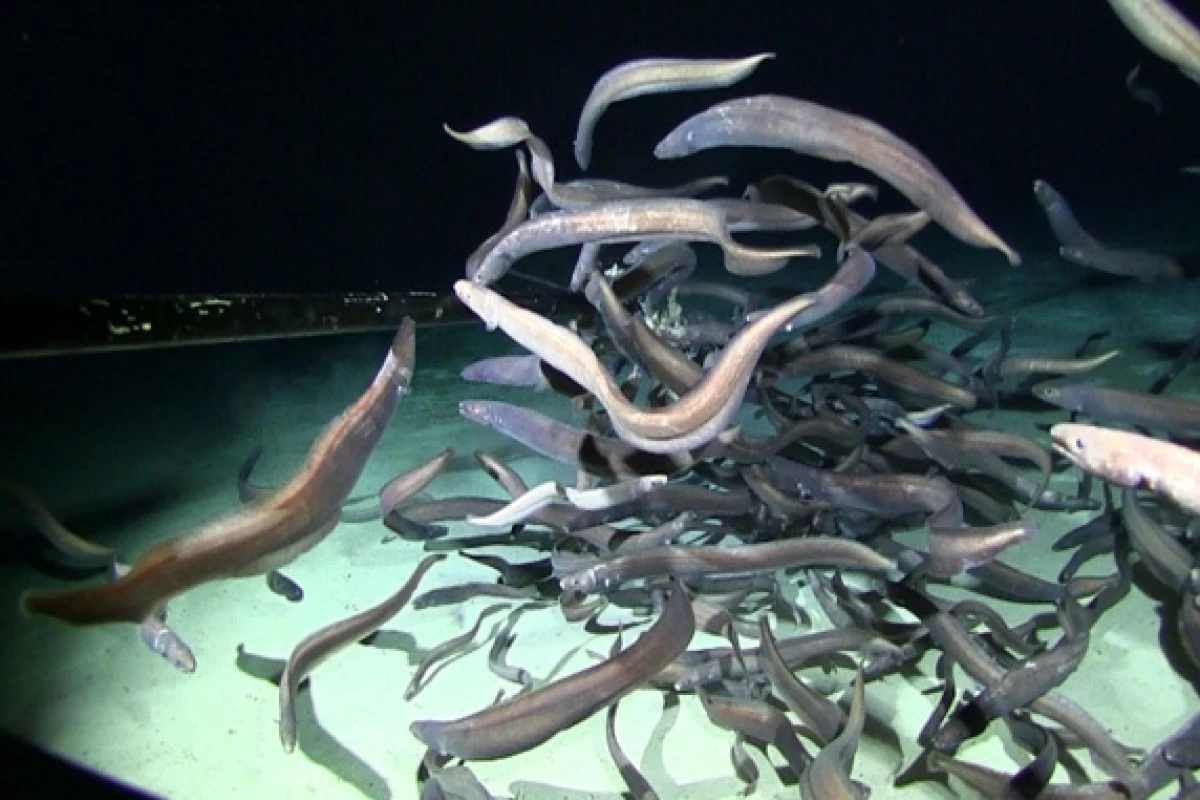A team of scientists from three notable oceanographic institutions has discovered the largest-ever aggregations of fish to be seen in the abyssal deep-sea region found between 9,800 and 19,600 feet (3,000 to 6,000 m) beneath the ocean surface.
If you look at the ocean by depth, in one respect it's very much like an upside down version of the surface world we live in. For us, the most abundant living region in terms of altitude is at or around sea level, where the conditions of light, temperature, and general environment are at their most benign. However, if you move to higher altitudes, like taking a trip into a high mountain region, things can start to get very unpleasant. The air gets thinner, life becomes increasingly sparse, the temperatures colder, and it isn't long before you're in a place where only the hardiest plants and animals can live – and there are very few of them about.
In the ocean, it's the exact opposite. Life has it best near the surface, where there's plenty of light, the environment congenial, and food abundant. If you descend, then it's like climbing a high mountain is for us. It gets darker, colder, and by the time you get to the abyssal depths, there are relatively few creatures, with most of them living solitary lives as they wait for a meal to drift or swim within range.
Nevertheless, there are exceptions to this, such as the volcanic chimneys that provide islands of heat and organic chemicals to support small colonies of creatures. According to the oceanographic team from the University of Hawaii at Manoa, Monterey Bay Aquarium Research Institute and the National Oceanography Centre (NOC), seamounts rising from the ocean floor can be added to the list of exceptions.
"Our observations truly surprised us," says Astrid Leitner, leader of the study. "We had never seen reports of such high numbers of fishes in the sparsely-populated, food-limited deep-sea."
The team was exploring the Clarion Clipperton Zone (CCZ), which is a deep-sea region stretching from Hawaii to Mexico that is of considerable interest because it could be the future site of sea mines to gather mineral nodules from the seabed that contain copper, cobalt, zinc, manganese, and other valuable metals.
As part of their research, the team wanted to establish a baseline understanding of the ecology of the region by lowering cameras and bait stations containing 2 lb (0.9 kg) of mackerel to the summit of three previously unmapped and unexplored seamounts and to other stations on the plains surrounding them.
The resulting video showed 115 cutthroat eels swarming about the bait package, which is almost double the previous record for the number of fish recorded at one time in the abyssal ocean. Some of these eels were captured and brought to the surface for analysis, confirming their species as Ilyophis arx – a fish that was previously known from a mere 10 specimens in fish collections around the world.
Ironically, when the stations on the plains were looked at, it's the same upside down pattern, The summit of the seamounts acted like islands that could support more animals, while the plains were bare of eels. It also indicates that the cutthroat eels prefer to live on seamounts.
The study was published in Deep-Sea Research.
Source: University of Hawaii at Manoa





